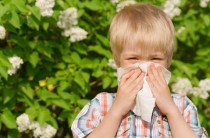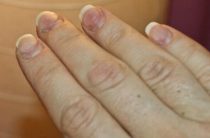According to medical statistics, numerous cases of allergies in children are associated with hereditary predisposition. The presence of an allergy in one of the parents increases the likelihood of this disease in a child by 40%. In addition to hereditary transmission, the child's body is extremely vulnerable to all sorts of environmental factors. So, food allergies in childhood often occur when natural foods are added to the child's diet.
Mothers need to be especially careful, both when organizing their diet, during feeding, and when adding new foods to the baby's diet. This is due to the fact that the child's gastrointestinal tract is only learning to properly absorb nutritional components, and at this stage it is extremely important to follow a consistent and competent approach during the introduction of new products.
A negative contribution to the development of allergic reactions is also made by the poor environmental situation in many regions of the country. As a result, children are born with an initial predisposition of the body to many chronic diseases, in particular allergic reactions. Also, a large number of non-natural compounds that are used in household chemicals, as well as in food products (various additives, stabilizers, thickeners, acidity regulators, etc.) play a negative role in increasing the sensitivity of the body.
How do allergies manifest in children?
Let's start talking about allergic manifestations in children with the most common form - food allergies. At the stage of breastfeeding, it occurs if the mother at the same time consumes such highly allergenic foods as smoked meats, canned fish, tomatoes, cocoa products, chocolate, crustaceans, shellfish. Allergenic components of these products pass into breast milk, and at the same time into the sensitive body of the baby.
With food allergies, children develop appropriate skin reactions. First, lesions appear with small swellings of a red or pinkish hue. Then, small frequent abscesses with watery contents appear in these places. As the reaction of the body develops, they become more and more itchy and after scratching, a yellowish dry crust is formed, which is prone to peeling. The moment of onset of a skin reaction after contact is individual. But, basically, the first signs appear only after 6 hours. With skin manifestations of allergies in children, it is most difficult to diagnose the cause of their appearance. In this case, the analyzes serve not only as a means to confirm the diagnosis, but also for its direct formulation, since the delay in the manifestation of the reaction from the moment the allergen hit makes it difficult to establish a causal relationship between these phenomena.
Also, skin manifestations of an allergic nature are observed with allergies to drugs. In addition, dermatological manifestations can also be observed with the introduction of drugs that are designed to relieve allergy symptoms. The child's body works paradoxically and can be sensitive to many substances. Often, it passes, with a return. But sometimes, developed hypersensitivity of the body can persist for life.
Another common type of allergic reaction in children is respiratory allergies, which are caused by airborne allergens. This may be an allergy to house dust, plant pollen, evaporating components of various substances, aromatic components of house flowers, gases and other factors that are carried through the air.
For respiratory allergies, in children, as in adults, the characteristic manifestations are: redness of the eyes, sneezing, irritation of the nasal mucosa, swelling of the space around the eyes, increased sensitivity to light, pain in the eyes and other unpleasant sensations. Respiratory allergy symptoms are much easier to diagnose because they appear almost instantly. Basically, from the moment the allergen hits to the moment the allergic reaction occurs, no more than 20 minutes pass.
Also, exposure to a respiratory allergen can cause asthma symptoms in a child, which are manifested by choking, shortness of breath and a hoarse cough.
Allergy symptoms are an important diagnostic indicator. The manifestations of allergic reactions are very peculiar and serve as a further direction for certain special examinations, as well as differential diagnosis (distinction from other diseases). Similar allergy symptoms can have diseases such as helminthic invasions, as well as intestinal dysbacteriosis.
The latter disease often occurs in childhood and causes allergic-like symptoms. Dysbacteriosis is a violation of the normal intestinal microflora, as a result of which the content of beneficial bacteria decreases and the number of harmful ones increases. This can provoke an abundance of sweet and meat, which is poorly absorbed in childhood. Poor environmental conditions, as well as taking medications, also serve as the causes of the appearance of childhood dysbacteriosis.
Allergen testing for children
The most reliable way to determine the presence of allergies is to conduct special diagnostic measures. They are necessary because it is far from always possible to immediately find out the cause of allergic reactions in a child, as well as the need to exclude diseases with similar symptoms. Analyzes for allergens are divided into several types: general analyzes (general analysis of urine, blood), analyzes of direct contact with the allergen and in-vitro tests (outside the body). Each of these methods has its own advantages and disadvantages. Basically, a combination of general and one special diagnostic method is used for diagnosis. Special diagnostic procedures are interchangeable methods. So, contraindications for skin tests in a child serve as an appointment for a blood test for allergens.
Skin tests in a child
Skin tests are a special diagnostic technique that is based on the analysis of the skin reaction that occurs in response to the penetration of an allergenic material. Skin tests should not be performed during an exacerbation of the disease, since the body, during an exacerbation, is in a state of increased sensitivity to allergens, which can result in the development of severe complications in a child.
And so, a skin test is an assessment of the condition of the skin. The allergen is administered locally, and then the corresponding skin reaction is monitored at the points of contact with the allergen. With a positive diagnosis, the skin integuments at the allergen injection sites carry out the following transformations: a blister occurs, which has an elevated temperature, as well as local vasodilation, the color can be either reddish or pink, and vice versa - blanching of the site of the skin reaction develops. With skin tests, the reactivity of the immune system is also diagnosed, upon contact with the allergen. The speed at which allergy symptoms appear can vary, from a few hours to a few days.
A skin test is a common name for diagnostic methods based on the results of a skin reaction. This diagnostic method is divided into several types, depending on the specific technique for its implementation:
The dressing method is used only in those areas where there is no localization of an allergic reaction. On areas of healthy skin, a special test bandage is applied, on which allergen solutions with a special composition are applied, which in itself does not provoke irritation on the skin. The test band is left intact for 48 hours. In children, this method is associated with certain difficulties, which are caused by the fact that it is necessary to refrain from physical activity, and also not to wet the place of application in another way.
Skin tests by scarring are carried out with the help of a special device, as well as with special equipment. It lies in the fact that incisions are made with a special scarifier, into which special solutions of allergens are instilled. The depth of the incision does not exceed 3 cm, which requires special accuracy and accuracy from the doctor who performs this procedure.
The injection method involves the introduction of a special solution of the allergen under the skin, using a syringe. The injection is carried out shallowly, within the epidermis, since the intramuscular injection of the allergen will not have a local, but a general reaction, in which it will be impossible to trace its source.
Skin tests are not performed if the child is less than 3 years old, because at this age, the baby's body can react with severe complications, which are extremely difficult to tolerate at this age.
Provocative tests in a child
Provocative tests are used to identify the allergen, with respiratory allergies. With contact, food and drug allergies, which are characterized by skin manifestations, this method is not indicative. The child is exposed to allergens in various ways: drip solutions into the eyes, nose, or by inhalation. At the same time, solutions for each organ are specific when administered, taking into account the optimal acid-base balance and other indicators.
The reaction during provocative tests to an allergen is characterized by the occurrence of various respiratory and allergic symptoms: sneezing, inflammation of the nose, redness of the eyes, development of asthmatic manifestations, etc. Provocative tests are also not used in children under 3 years of age.
Blood test for antibodies in a child
This method is preferred for younger children, since the evaluation of the child's blood reaction is carried out in the laboratory. For this, venous blood is taken on an empty stomach, which is then subjected to contact with allergen solutions. In this case, an analysis is carried out for antibodies, of a general and special type. An increase in special antibodies indicates the nature of the allergen, and the level of general antibodies allows you to diagnose the intensity of an allergic reaction.
Antibodies are a special immune protein complex that is produced by lymphocytes in response to an allergen. Their complementarity to a certain component of the allergen allows them to combine and act on mast cells that contain factors for the development of an allergic reaction. With an allergy, the child's body secretes special antibodies that have a chemical affinity for a specific protein component of the allergen, as a result of which the allergic reaction is highly specific.
A blood test for antibodies is a safe laboratory diagnostic method. You can take this analysis only in clinics and laboratories with special diagnostic equipment.
General blood test for allergies in a child
A general blood test, with the development of an allergic reaction in a child, has not only a general, but also a special meaning. Firstly, it allows you to diagnose the general state of health, the content of proteins, glucose, liver enzymes and other components in order to assess what changes are taking place in the child's condition. Secondly, it allows you to track the level of eosinophils in the blood of a child.
Eosinophils are blood cells that are essential for the production of antibodies. An increase in their level, in relation to normal values, is called eosinophilia and is often evidence of an allergic reaction. A blood test for allergies in a child is an important diagnostic criterion, but is not the basis for making a diagnosis and is used to obtain extended data on the nature of the disease.















